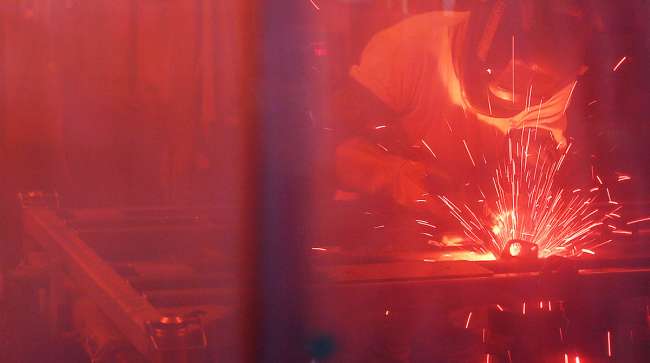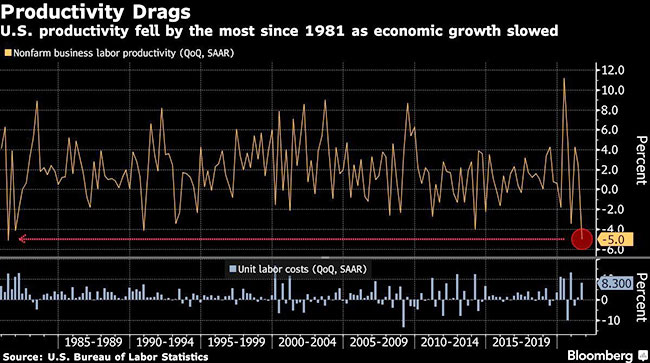Bloomberg News
US Productivity Falls Most Since 1981

[Stay on top of transportation news: Get TTNews in your inbox.]
Productivity in the U.S. fell by the most since 1981 in the third quarter, reflecting a sharp pullback in economic growth and an increase in hours worked.
Nonfarm business employee output per hour decreased at a 5% annualized rate in the third quarter, according to Labor Department figures on Nov. 4. That compared to a 2.4% gain in the second quarter and the 3.1% projected decline in a Bloomberg survey of economists. Productivity growth rates can be extremely volatile.
The economy grew at the softest pace of the pandemic recovery last quarter as snarled supply chains and a surge in COVID-19 cases throttled spending. That deceleration, in turn, drove down the government’s measure of productivity growth.
“We take the plunge with a large grain of salt since the data are heavily distorted by the pandemic,” Oxford Economics’ Oren Klachkin and Gregory Daco wrote following the report. “We look for productivity growth to stay upbeat in the near-term even as the labor market recovery heats up and the economy maintains solid momentum.”

Firms faced with rising costs, including those related to labor, often seek to improve worker productivity by adopting technological improvements and investing in equipment.
With the drop in productivity, unit labor costs jumped at an 8.3% rate following a 1.1% gain in the previous three months.
Many businesses have raised wages or offered incentives in recent months to attract and retain workers. Data out last week showed wages and salaries surged in the third quarter by the most on record. Even so, labor constraints have limited output growth and aggravated transportation challenges.
Price pressures remain extremely elevated across a variety of inflation metrics. If productivity growth fails to materially pick up in the coming quarters, it could fuel concerns about the rapid pay increases creating a wage-driven inflationary spiral.
While hourly compensation increased in the quarter, it actually fell when adjusted for inflation.
The Nov. 4 report showed output rose at an annualized 1.7% pace from the prior period, while hours worked increased by 7%.
Want more news? Listen to today's daily briefing below or go here for more info:

